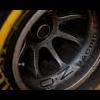Search the Community
Showing results for tags 'formula 1 2014'.
-
Along with the controversial decision to award double points for the final race of the season, the FIA announced last month that Formula One drivers would be allowed to choose permanent numbers that can be carried over from season to season. Previously, the numbers changed based on finishing positio...
- 3 comments
-
Some racing series are easier to understand than others, but to put it mildly, F1 is about as technically complex as rocket science. With 500 members of each team spending millions upon millions each year to gain an advantage. But if you thought you had managed to wrap your head around the way thing...
